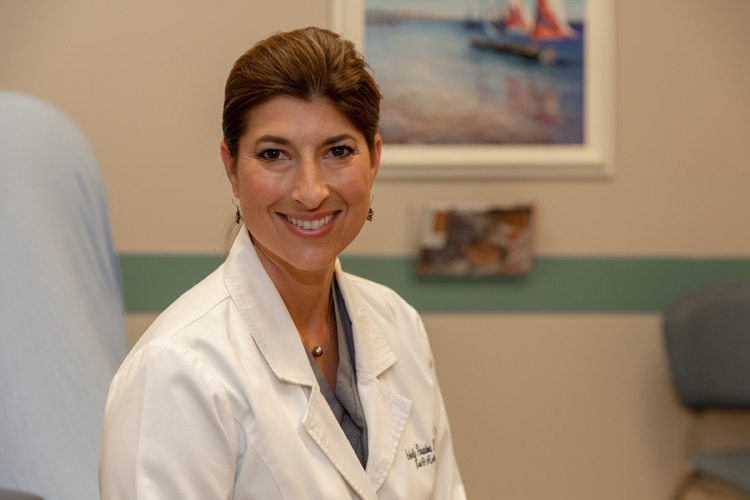
Photo by: Denise Ritchie More than 65,000 lower limbs are amputated annually due to complications from diabetes including diabetic foot ulcers, according to the American Podiatric Medical Association.
Even worse, a huge percentage of those amputations could have been avoided if diabetic patients had stuck to their treatment plans and made at least one visit a year to a podiatrist like Dr. Amberly Paradoa at Cleveland Clinic Indian River Hospital’s ambulatory care center.
Dr. Paradoa, despite her youthful appearance, is more than a podiatrist. She is also a wound healing and hyperbaric medicine expert as well as a foot and ankle surgeon who is keenly aware that after one amputation, the chance of having another one within three to five years can be as high as 50 percent.
According to Cleveland Clinic, “the best way to prevent diabetic foot ulcers is to keep your blood sugar levels under control,” but it is also true that diabetic foot ulcers “can begin in a mundane way. Maybe it’s a new pair of shoes or an extra-long walk. Next thing you know, you have a small callus or blister on your foot,” and that – for diabetics – is a big red flag.
“The problem arises,” the Cleveland Clinic continues, “when you lose feeling in your feet. If you keep walking instead of stopping or changing shoes, a small sore may turn into a much more serious wound.”
The loss of feeling is due to peripheral neuropathy, which the Mayo Clinic points out “is a type of nerve damage that can occur if you have diabetes.” It damages the nerves in your legs and feet.
“Peripheral neuropathy,” the Rochester, Minnesota, institution adds, “is the most common type of diabetic neuropathy. It affects the feet and legs first.” The signs and symptoms of peripheral neuropathy include numbness or a reduced ability to feel pain or temperature changes.
Not feeling the pain from one of those “small sores” can lead to big trouble since about 10 percent of people with diabetes will end up with a foot ulcer.
Or worse.
“I always tell my patients,” Paradoa states flatly, “that [with peripheral neuropathy] the foot and the brain are no longer wired correctly. And that neuropathy gradually gets worse and worse without them realizing it.”
She advises checking the bottoms of the feet and in between the toes looking for any red spots, any blisters or any open sores.
“Diabetic foot ulcers,” she explains, “are just so problematic because these patients can have reoccurrences of their wounds … our goal is to try to heal them as quickly as possible.”
That, she says, is vitally important because “some of the statistics show that for patients with diabetic foot ulcers with diabetic neuropathy and peripheral vascular disease, the mortality rate is [just] five years.”
“There are times I have to tell patients [about their foot wounds] … because they don’t feel their foot. They don’t feel the pain. So, they don’t even realize there’s a problem.”
“Prevention is key,” Paradoa says. “It’s the key. Diabetics should at least be seeing their podiatrist once a year.”
And, she adds, what you wear on your feet can make a big difference, too.
Besides daily inspections of your feet, Paradoa strongly recommends protective footwear and avoiding walking barefooted, even in the home.
“I have patients who will tell me, ‘Oh, I wear socks at home,’ but socks don’t protect your feet from sharp objects or banging your toes, things like that.”
The plain fact is, people with diabetes need to pay particularly close attention to their feet.
Depending on both the diagnosis and the patients’ adherence to a treatment plan, that may be enough. Or it may not be.
During a screening, Paradoa may realize there are other problems that need to be addressed such as peripheral artery disease. She might then send the patient to a vascular specialist. But the sooner those steps – if they’re needed – are taken, the less likely it is that amputations and other surgical interventions will be needed.
Considering that the Centers for Disease Control estimates “more than 100 million U.S. adults are now living with diabetes or pre-diabetes,” an annual visit to a podiatrist is a prudent move to help keep your feet firmly on the ground.
Dr. Amberly Paradoa is with the Cleveland Clinic Indian River Hospital. Her offices are at 1000 36th Street and 3735 11th Circle, Suite 201 in Vero Beach. The phone number at 36th Street is 772-563-4625 and the number at 11th Circle is 772-299-7009.



